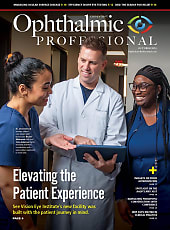Atsena Therapeutics announced positive clinical data results from Part A of the LIGHTHOUSE study, a phase 1/2 clinical trial evaluating subretinal injection of ATSN-201 for the treatment of X-linked retinoschisis (XLRS). The data were presented at the 2025 Association for Research in Vision and Ophthalmology (ARVO) meeting in Salt Lake City, Utah.
ATSN-201 leverages AAV.SPR, the company’s novel spreading capsid, to achieve therapeutic levels of gene expression in photoreceptors of the central retina while avoiding the surgical risks of foveal detachment. The best-in-class gene therapy product candidate has received Regenerative Medicine Advanced Therapy, Fast Track, Rare Pediatric Disease, and Orphan Drug Designations from the US Food and Drug Administration (FDA), the company said in a press release.
The LIGHTHOUSE study is a dose-escalation and dose-expansion clinical trial in male patients ages 6 and older with a clinical diagnosis of XLRS caused by mutations in the RS1 gene. Enrollment for this study is ongoing.
According to Atsena Therapeutics, Part A of the study evaluated the tolerability and safety of 3 different doses of ATSN-201 administered through subretinal injection in 3 patients per cohort, for a total of 9 adult patients. ATSN-201 was well tolerated in all 9 patients with XLRS in Part A, and no serious adverse events related to treatment were reported. The majority of adverse events were related to the surgical procedure and were Grade 1-2 in severity. One serious adverse event, a fever of unknown origin with negative workup, occurred, which was unrelated to ATSN-201 or the surgical procedure. There were no dose-limiting toxicities, and no subjects discontinued from the study.
Efficacy highlights from the data include:
- Preliminary evidence of efficacy demonstrated at all dose levels
- 7 of 9 treated eyes had closure of foveal schisis, which was not demonstrated in untreated eyes
- On microperimetry (MP), 67% of treated eyes (6/9) had an improvement of ≥ 7 dB in the 5 or more loci with the lowest sensitivity at baseline
- Statistically significant improvements were seen in best-corrected visual acuity (BCVA) and low-luminance visual acuity (LLVA)
- Structural improvements correlated with improvements in function
The company said enrollment is underway in Part B, a multicenter clinical trial that will evaluate 9 additional adults and 3 pediatric patients with XLRS. The adult cohort will be broken down into 3 arms: low volume, high volume, and control (deferred treatment). Patients in the control arm will be observed for 1 year and then have the option to receive treatment. The pediatric cohort will be dosed after evaluating preliminary data from the adult cohort in Part B. This part of the study will continue to assess safety and efficacy, including microperimetry, visual acuity, and macular structure. RP








